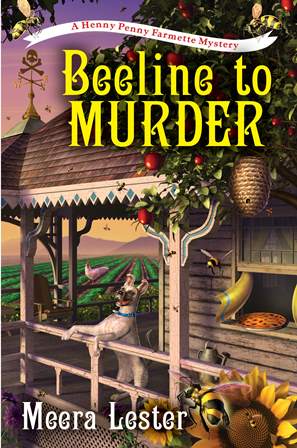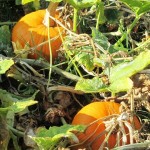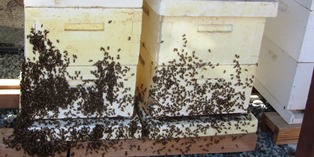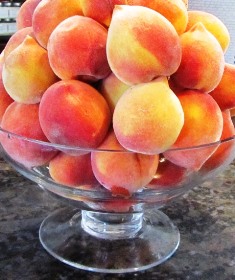Enjoy Seasonal Fruit Year-round
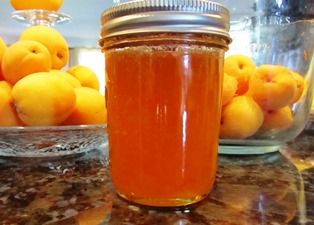
In the Bay Area, strawberries, blueberries, and early varieties of plums ripen in the spring. By the start of summer, a lot of stone fruit is available. Look for apricots and peaches and later varieties of plums during early June through July. Find peaches and nectarines by mid-August.
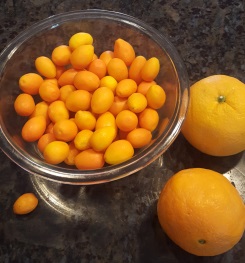
for winter marmalade
The end of the stone fruit heralds the arrival of late-summer pears. Local suppliers offer these fruits at farmers’ markets and to stores throughout the harvest period so buyers can be assured of fruit quality and freshness.
To preserve your favorite summer stone fruit, you have several options. Hot-water canning supplies come in handy for preserving fruit into jam, jelly, marmalade, and conserve. A dehydrator produces dried fruit and leathers. Finally, some fruits can be made into jam or marmalade and refrigerated for use over a week or two or frozen.

As summer nears its end, look for a large variety of pears and persimmons to show up on store shelves. Then, as the winter holidays near, citrus (oranges, kumquats, lemons, and limes) begin to ripen and can be preserved into a soft spread such as a conserve, jam, or marmalade.
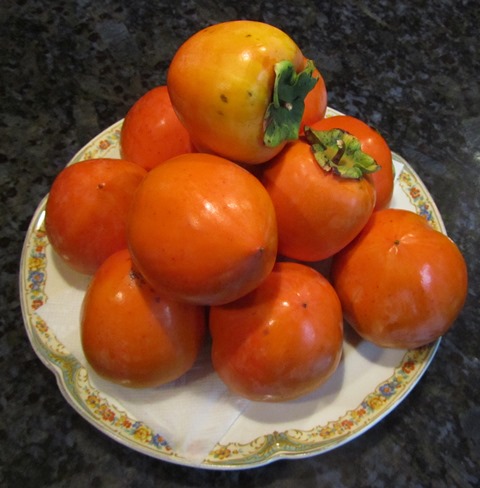
If country living topics interest you and you enjoy a good mystery with recipes and tips for keeping chickens and bees, check out my Henny Penny Farmette series of cozy mysteries, informed by my real-life farmette experiences.
The novels include A BEELINE TO MURDER, THE MURDER OF A QUEEN BEE, and A HIVE OF HOMICIDES. All are available online or wherever books are sold.
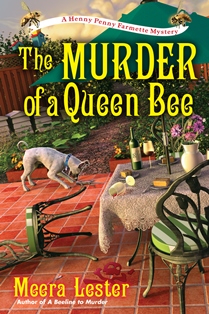
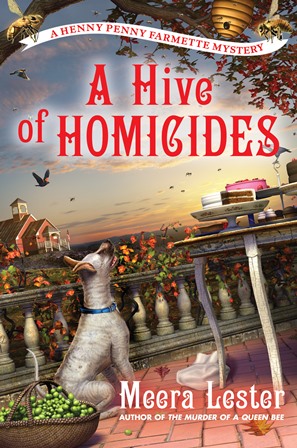
Add a Secret Ingredient to Kick-start Your Compost Pile
The leaves of my plum and cherry trees are beginning to drop. The fig leaves have dried to a crisp and are also falling. I’ve got pumpkin and squash vines and stalks of corn pulled and lying in piles in the garden.
This dead, particulate organic matter (detritus) in my garden is too good to throw in the green recycle bin for the city to compost. By composting it myself, I’ll save the money I might spend on buying compost next year.
If your garden has a pile or two of of similar detritus but you’ve had trouble getting it to break down into compost, you might be missing a secret ingredient.
Add one to two cups of a nitrogen-rich garden product like blood meal, bone meal, or cottonseed meal–all are available from your local nursery or garden center.
Follow these simple steps.
1. Dump a wheelbarrow load of leaves where you will be composting this fall and winter. I use a rectangular raised bed.
2. From a cup of blood meal, generously sprinkle the meal onto the leaves.
3. Layer onto the pile grass clippings, pumpkin and squash vines, corn cobs, chicken house straw, dried oats, weeds, and other biomass material.
4. Add more blood meal, more leaves, and more organic material.
5. Sprinkle the remaining blood meal from your cup onto the compost pile and then wet it using a garden hose.
6. Cover with plastic sheeting.
The compost pile generates heat as the plant material breaks down. Thoroughly turn at two or three week intervals. Keep the pile moist (not drenched) and covered.
Using this method, you can expect to have lovely nutrient-rich compost to use on your spring flower and vegetable gardens.
___________________________________________________________________
If you enjoy reading about gardening topics and you are a mystery lover, check out my Henny Penny Farmette series of mysteries from Kensington Publishing. Each charming novel features a wholesome whodunnit along with delicious recipes and farming facts and tips.
Click here to see more: http://tinyurl.com/ya5vhhpm
Join me for “Coffee and Conversation” at Towne Center Books in Pleasanton, The date is Wednesday, October 18, 2017, at 11:00 a.m. The address is: 555 Main Street, Pleasanton, California. Phone is (925) 846-8826.
I’ll be sharing information about my farmette, my mystery-writing process, and my newest novel, A HIVE OF HOMICIDES.
Drying Fruits Naturally
I love dried apricots, but don’t tolerate well the ones treated with sulfur dioxide(used to prevent oxidation and loss of color). With so many apricots on our property coming ripe at once, I have decided in addition to making jam this year to also dry some of the fruit.
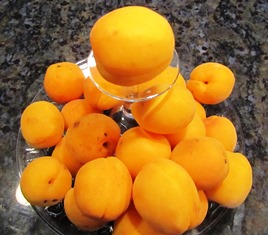
Apricots, so plentiful this time of year, are easy to dry and make great snacks when the season is over
Apricots dried but not treated with sulfur dioxide will turn a natural brown color. Some stores sell them this way. They are usually priced the same or similar to the treated apricots with the bright orange hue.
Besides apricots, other fruits that dry well include apples, bananas, cherries, grapes, nectarines, peaches, pears, plum, rhubarb, and even strawberries. You can use a drying machine
Quick Tips for Drying Fruit
1. Choose to dry only the freshest picked fruits, without bruises, scale, sun scald, or other blight.
2. Spray nonstick vegetable spray on drying pans or trays to make it easier to remove the dried fruit
3. Lay out the fruit to dry in a single layer on trays. Remember to rotate the trays occasionally and turn the pieces from time to time.
4. Destroy any insects (miniscule or otherwise) by freezing or baking the fruit. Simply take the tray and stick it into an oven heated to 175 degrees Fahrenheit for about 15 minutes. Alternatively, pack the dried fruit in freezer bags and freeze for at least 2 days.
5. Freezing dried fruit in resealable freezer bags will preserve its shelf life.
Puzzling through a Cozy, Weeping at a Memoir, and Forgetting the Peach Pie
I couldn’t breathe in yesterday’s heat. But with so much work to be done around the farmette, I soldiered on, staking heirloom blue tomatoes. I hadn’t finished canning my organic apricots and now the plums and peaches were ready. I felt overwhelmed and longing for cool spot to sip tea, rest, and read.
We had already removed the apricots from our “torture tree” since we’ve been unable to surmount its many problems after planting it five years ago. Carlos wasted little time chain-sawing it down. I deadheaded the roses, while he dug out the stump.
Then with a clear view to our hives, we quickly realized that the we needed to suit up and install extenders or the bees would swarm. Even as we felt the urgency, we realized there were also dozens of other chores screaming for our attention.
I told myself that breezes would soon blow inland from the Carquinez Strait, a channel of the San Francisco Bay where the San Joaquin and the Sacramento Rivers flow to the ocean, but by mid-afternoon, nary a leaf moved on the apricot, plum, and pomegranate trees. By four o’clock when the wind finally did kick in–the air wasn’t cool as it usually was. The winds blew strong and stifling hot and threatened to suffocate anyone still working outside.
Abandoning the outside chores, I retreated indoors and turned on the air conditioner. Seeing the lug of apricots and crock of peaches resting on the kitchen counter, I groaned. The jam had to be made, but I couldn’t face stirring boiling fruit on a hot stove.
Deciding to use up some of the fruit for a simple after-dinner dessert, I flipped through the pages of a few cookbooks. Maybe a cobbler would do or a peach pie. I really didn’t need a recipe for those, but in Country Cooking by Dori Sanders, I found an intriguing raisin-cinnamon crust that sounded tasty. I bet it would go with peaches but I probably could have baked it on the patio floor.
With a glass of sweet tea and an armload of paperbacks and hardcovers, I curled up on the couch and finished reading Murder is Binding, Lorna Barrett’s debut book in her cozy Booktown Mystery series. I love this author and her writing, but soon figured out who done it. Still, I read to the end; you never know when a clever twist might show up.
Next, I read the last few pages of A Tuscan Childhood by Kinta Beevor. At bedtime, I’d been savoring the chapters of that book like pieces of rich, dark chocolate. Beevor’s evocative descriptions of her bohemian childhood in Tuscany captured my imagination, drawing me in so completely I could almost smell the wild thyme, pine needles, and rocky Tuscan terrain in the searing, summer heat. Like Frances Mayes (Under the Tuscan Sun), who wrote a quote for the cover, I felt sad when Beevor’s lovely memoir ended.
Returning to the stack, I selected another memoir, The Orchard, by Theresa Weir. I’d bought the book on impulse during a trip to the farmers’ market at Todos Santos Plaza, our downtown green space surrounded by bars and banks and, of course, a second-hand bookstore. Drastically marked down, the book had been summarily deposited on a set of moveable shelves, and rolled outside the storefront for a quick sale.
The artist and writer in me understood immediately why I had picked it up and purchased it: the cover art pictured a young couple in a loving embrace, standing in lush green grass surrounded by apple trees. But there was something in that image that evoked sadness, like a bittersweet dream of a time past, viewed through a long lens.
As the descendant of five generations of farmers, I suspected Weir’s book would resonate with my own experiences of farm life in America’s heartland with bone-chilling winters of snow and ice and sweltering summers when you prayed for rain. What I didn’t expect was exquisite writing and the juxtaposition of love against the deadly realities of widespread pesticide use on the farms that ushered me into her story and swept me along. I finished that book in one sitting and will long be haunted by it.
I felt guilty for having only paid pennies for Weir’s book. A pittance for a tale that evolved out of all she had lived through. Less than the price of bus fare to journey with her as she pieced together scenes from her life in the Heartland. In every page, I was with her as she struggled, never abandoning her dreams. She learned as I had how to tuck them away while you dealt with the realities of a hard life with heart-breaking lows and highs that reached euphoria. But there were scenes she left out, only hinting at experiences she said she would “never talk about.” The truth is, I wept after putting down her book.
When a reader identifies so closely with a character in a story (and this was Weir’s personal narrative of her life), he or she rides the emotional ups and downs with that character. Good writers understand how to tug at their readers’ emotions and milk the drama. Theresa Weir had skillfully threaded a leitmotif of darkness and light, joy and sorrow, pain and healing through her story, but never once did I feel manipulated. Every sentence of The Orchard rang true.
I couldn’t read anymore after putting that book down. As I made dinner, I thought of how many scenes in her life resonated with mine. Even the widespread pesticide use on farms and the stubbornness of farmers to change.
I thought about Rachel Carson’s famous book, Silent Spring, that sounded the wake-up call to farmers everywhere about the dangers of chemicals in fertilizers, pesticides, and herbicides. So many small farms have been overtaken by agribusinesses these days and still the chemicals are used. I decided to forgo making the peach pie.
With the heat of the day gone, I opened the windows and stretched out between freshly washed sheets. I listened to the rustle of oak and eucalyptus leaves. To crickets and the unseen critters that make noises in the night. I listened to the soft voices of my Lebanese neighbors chatting in their orchard with relatives.
As dreams beckoned, I could almost smell the fresh lilacs that Theresa Weir had written about in her memoir. Their cloying scent had filled her grandmother’s kitchen just as they had filled my grandmother’s, my mother’s, and mine. I wondered if the lilacs would ever disappear or if the world would one day wake up to find the honeybees gone, the fruit trees without fruit, and the berries and other sweet produce in our gardens and orchards reduced to a memory.
 Facebook
Facebook Goodreads
Goodreads LinkedIn
LinkedIn Meera Lester
Meera Lester Twitter
Twitter




